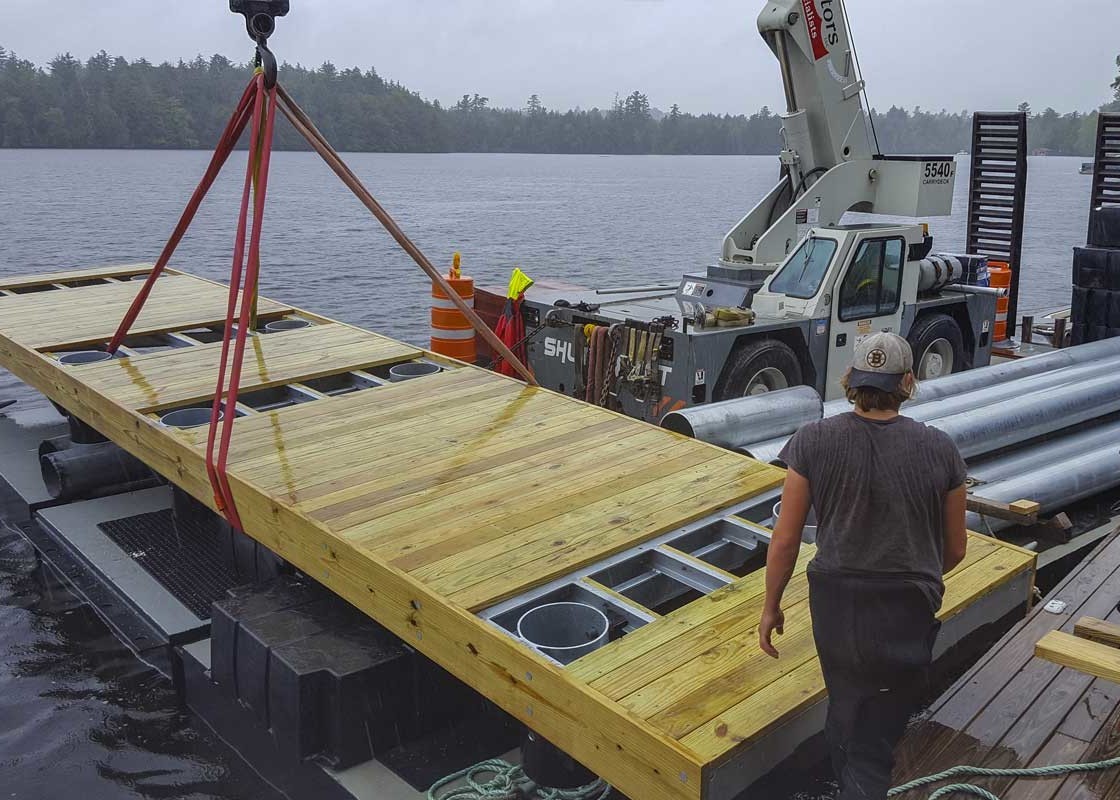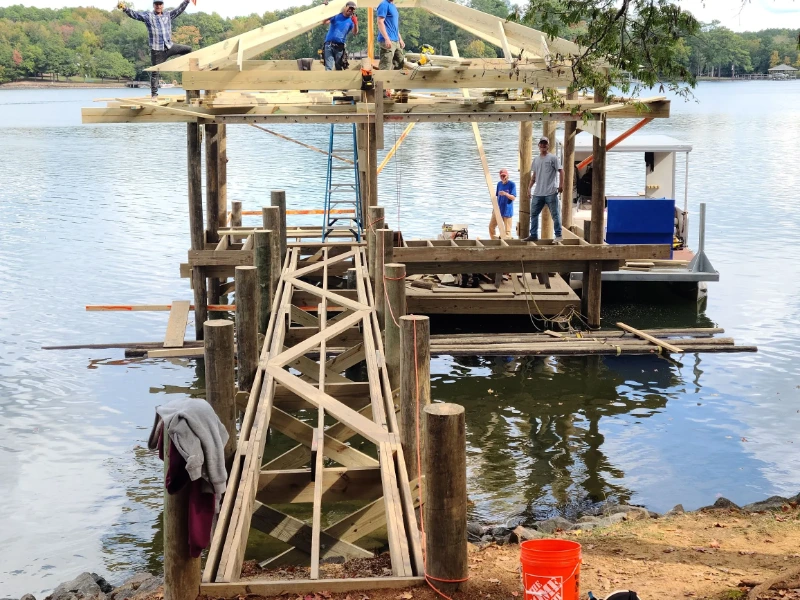Comprehending the Expenses Involved in Dock Repairs
Efficient Dock Repair Work Techniques: Making Certain Architectural Honesty
Making sure the structural stability of docks via efficient repair techniques is critical for the long life and safety of aquatic facilities. Subsequently, picking the ideal repair service materials, such as composite products and corrosion-resistant alloys, is important for toughness.
Analyzing Dock Damage
Assessing dock damages is a crucial very first step in making sure the architectural stability and security of any type of docking facility. This initial examination includes an extensive evaluation to determine both covert and noticeable problems. Secret elements to analyze include the dock's structure, pilings, outdoor decking, and equipment. Each component needs to be inspected for indications of wear, rot, deterioration, or various other forms of degradation that might endanger the architectural stability.
Architectural designers or qualified inspectors generally execute these evaluations utilizing specialized devices and techniques. For example, underwater evaluations could use sonar devices or from another location ran lorries (ROVs) to spot submerged damages. Above water, aesthetic evaluations are enhanced by utilizing dampness meters and other analysis tools to reveal underlying problems not promptly noticeable to the naked eye.

Picking Repair Work Materials
Picking the ideal repair products is an essential action in the dock restoration procedure, one that directly influences the durability and performance of the fixed structure. Material selection should be driven by aspects such as environmental problems, load-bearing demands, and compatibility with existing dock components.
Along with wood, composite materials are increasingly prominent due to their sturdiness and reduced maintenance requirements. Compounds, normally made from a blend of plastic and timber fibers, use outstanding resistance to rot, bugs, and UV damages. For metal anchors, picking corrosion-resistant alloys such as galvanized steel or marine-grade light weight aluminum is crucial to protect against rust and make sure architectural honesty in saline water problems.
Epoxy materials and marine-grade sealers are indispensable for fixing fractures and sealing joints, offering a waterproof barrier and boosting the dock's total toughness. By thoroughly choosing top quality materials, dock repairs can accomplish resilient results, consequently securing versus future destruction and making certain secure, dependable usage.
Structural Reinforcement Strategies
Efficient architectural reinforcement methods are essential in guaranteeing the stability and long life of dock repairs. One basic method entails making use of steel or composite support bars (rebar) within concrete structures. Rebar provides extra tensile strength, preventing splits and dispersing tons extra evenly. This technique is specifically reliable for docks subjected to heavy tons or harsh environmental conditions.
One more vital technique is the application of fiber-reinforced polymers (FRP) These materials use high strength-to-weight ratios and superb resistance to corrosion, making them suitable for enhancing wood or concrete docks. FRP can be applied in strips or sheets and adhered with epoxy materials to boost architectural integrity.
Bracing and anchoring systems also play an essential function in structural support. Cross-bracing, making use of steel or wood beam of lights, can counteract lateral forces, lowering persuading and motion. Securing systems, such as helical piers or driven stacks, provide a steady foundation by moving lots to much deeper, much more steady soil layers.
Lastly, the integration of load-distribution plates can help disperse weight more uniformly across the dock's surface, mitigating localized stress and anxiety points. These methods collectively guarantee that docks stay reference durable and risk-free, qualified of holding up against the rigors of their operational environment.
Advanced Repair Work Methods

Another advanced strategy involves undersea welding, which enables fixings to be carried out without the requirement to dewater the location. This method is particularly beneficial click here now for resolving structural issues in immersed dock components, making certain minimal interruption to operations. Boosted welding techniques, combined with robot systems, deliver accuracy and integrity, therefore prolonging the life-span of the dock.
Additionally, cathodic security systems are implemented to stop deterioration in metal dock frameworks. By utilizing sacrificial anodes or pleased current systems, these strategies successfully alleviate the electrochemical processes that cause material degeneration.
Lastly, advanced monitoring technologies, such as architectural wellness surveillance (SHM) systems, offer real-time data on the condition of dock structures. These systems allow proactive maintenance and prompt interventions, inevitably making sure the long-lasting structural stability of the dock.
Maintenance and Avoidance
Upkeep and avoidance are fundamental ideas that underpin the durability and security of dock frameworks. Normal examinations are paramount, enabling very early discovery of deterioration, possible weak points, and environmental impacts. An aggressive method, including regular checks for deterioration, rot, and architectural shifts, minimizes pricey fixings and lengthens the dock's functional life.
Preventative measures must consist of using protective coverings to steel components to secure against rust and utilizing treated timber to withstand degeneration. Furthermore, making sure appropriate water drainage and air flow can protect against water buildup, which is an usual root cause of structural deterioration. Incorporating high quality products and adhering to producer guidelines throughout building and construction and repair work phases additionally play important functions in boosting durability.

Educating workers in dock maintenance ideal practices makes certain constant application try these out of preventive procedures. Leveraging technological advancements, such as drones for evaluations and sensors for real-time tracking, can additionally improve maintenance efforts. By prioritizing maintenance and avoidance, dock owners can guarantee architectural stability, operational safety and security, and affordable administration over the dock's life expectancy.
Final Thought
In verdict, preserving the structural stability of aquatic facilities requires thorough dock repair methods. Advanced fixing techniques, paired with routine upkeep methods, make certain the dock remains risk-free and functional under varied ecological problems.
Guaranteeing the structural integrity of anchors via efficient repair service strategies is critical for the durability and safety of marine facilities.Selecting the appropriate fixing products is a pivotal step in the dock restoration procedure, one that straight influences the durability and performance of the fixed structure.Efficient structural reinforcement strategies are essential in making certain the security and longevity of dock repairs. By prioritizing upkeep and avoidance, dock owners can ensure structural stability, operational security, and cost-effective administration over the dock's life-span.
In conclusion, keeping the structural integrity of aquatic facilities requires comprehensive dock fixing strategies.